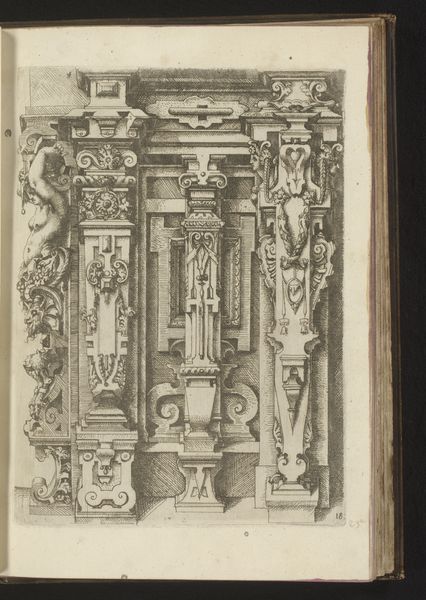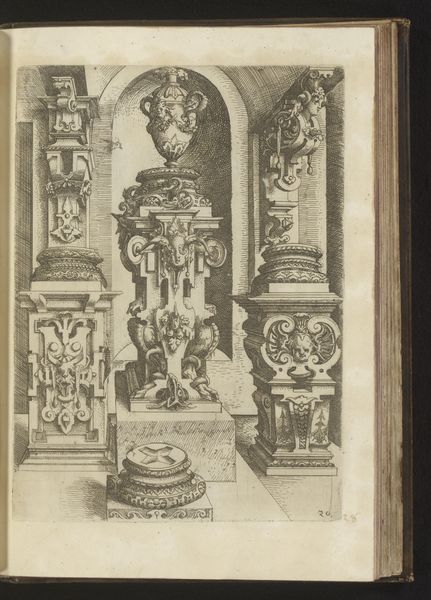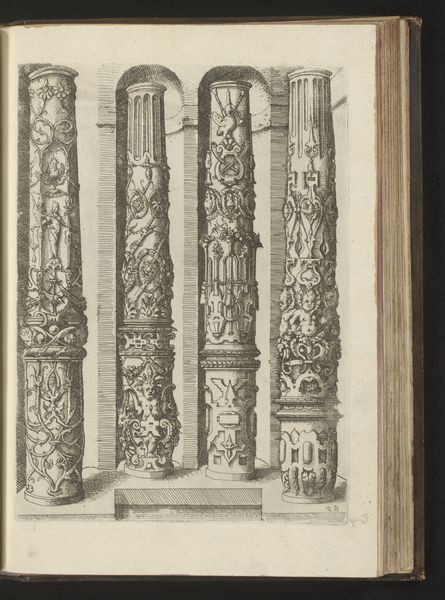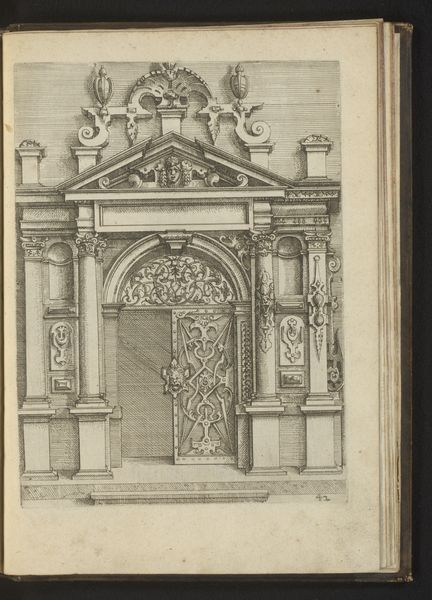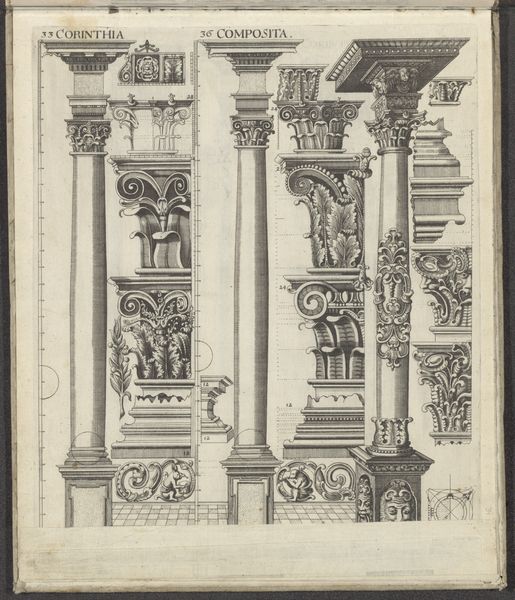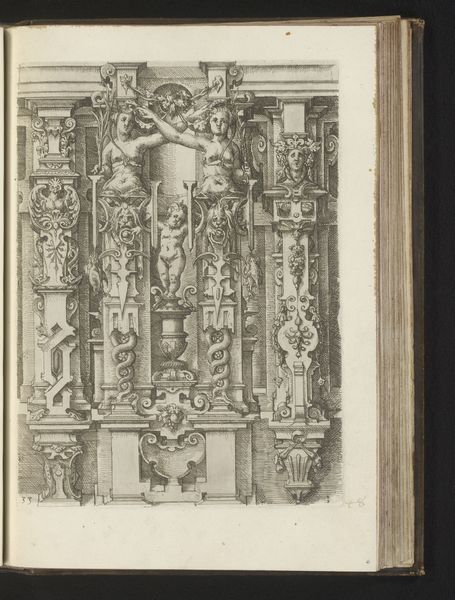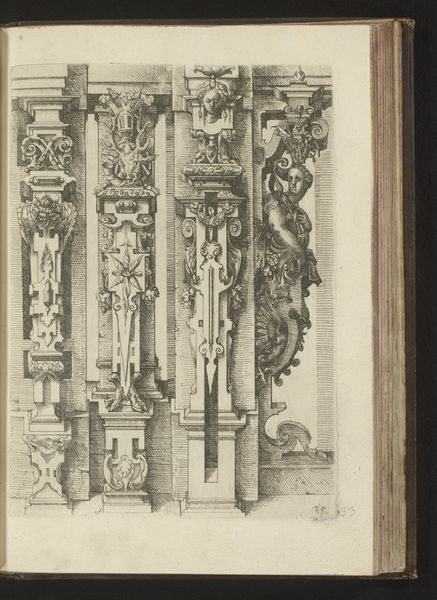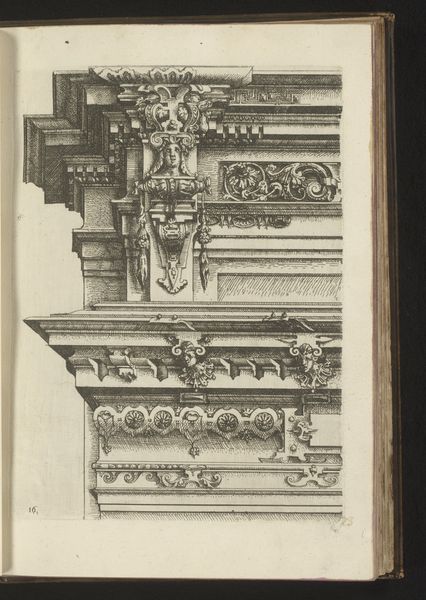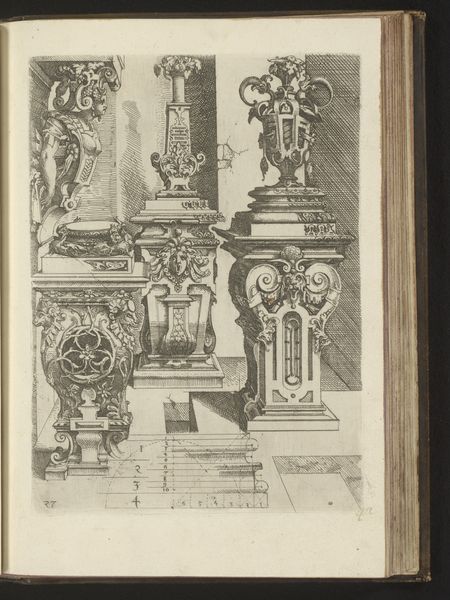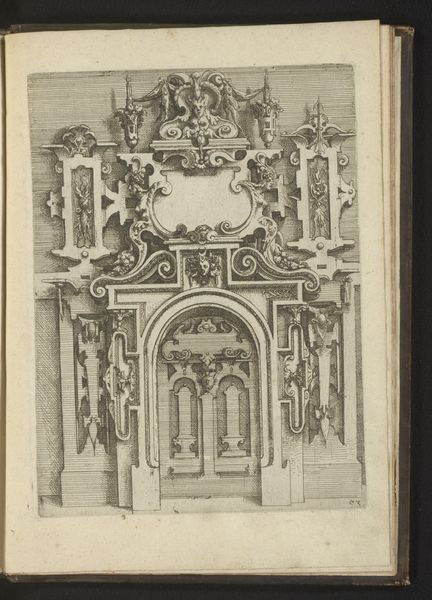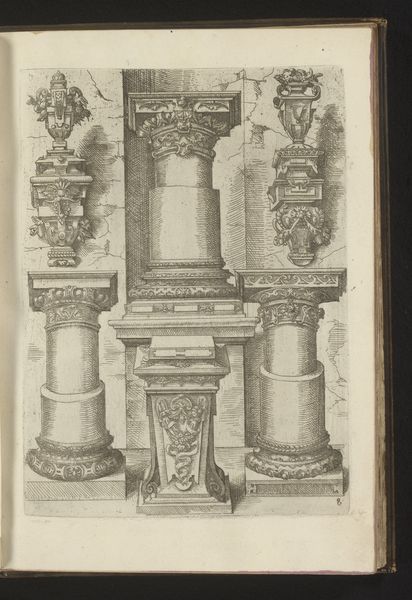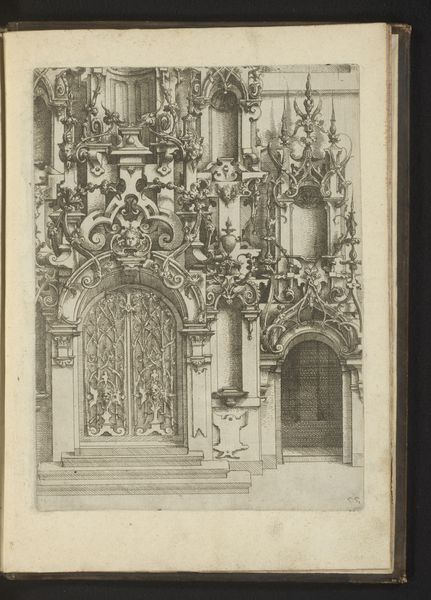
Vijf Dorische pilasters gedecoreerd met rolwerk, wapentrofeeën en een herme gekleed als soldaat en van opzij gezien 1593 - 1595
0:00
0:00
drawing, ink, architecture
#
drawing
#
pen drawing
#
form
#
11_renaissance
#
ink
#
column
#
line
#
northern-renaissance
#
decorative-art
#
architecture
Dimensions: height 252 mm, width 185 mm
Copyright: Rijks Museum: Open Domain
Curator: Looking at this intricate pen and ink drawing, dating from 1593 to 1595, we see Wendel Dietterlin’s vision for "Five Doric Pilasters Decorated with Scrollwork, War Trophies and a Herm Clad as a Soldier, Seen from the Side." The architecture and its ornament are brimming with the styles of the Northern Renaissance. Editor: Wow, "brimming" is right. My first thought is organized chaos. I mean, each pilaster is different, layered with so much detail it's almost overwhelming, yet, the whole image kind of sings. What's your read on that, knowing its context? Curator: Dietterlin’s drawings, and prints based on them, served as pattern books. Consider how crucial ornament was, not merely as decoration, but as a carrier of meaning, of cultural status. This image showcases the dense iconographic programs favored in the era—arms, masks, grotesque figures. Editor: Okay, a how-to guide for visual maximalism. I love the swagger of that soldier-herme clinging to the edge, but do you think that intense detail helped or hindered accessibility? Wouldn't some patrons have struggled to unpack all the visual information? Curator: Perhaps. But in courtly settings or in wealthy mercantile cities, this kind of erudite complexity signaled refinement. Knowing the symbolism conveyed social power, and commissioning artists like Dietterlin declared that power visually. We must also consider his "Architectura," an ambitious book presenting fantasy architecture that goes beyond practicality. Editor: "Fantasy architecture," perfect! That frees me up. These columns aren't really columns, are they? They're launching pads for the imagination. Dietterlin almost seems to be composing music on paper. And the hatching and line work—mesmerizing. Curator: Agreed. Dietterlin certainly moved beyond straightforward architectural drafting. His works capture the dynamism of late 16th-century art, revealing the connections between ornament, symbolism, and the structures of power that shaped the Renaissance world. Editor: Well, Dietterlin has definitely piqued my interest! It’s a fascinating look into a mind overflowing with decorative possibilities. I can’t help but want to use these pilasters as starting points for new creations!
Comments
No comments
Be the first to comment and join the conversation on the ultimate creative platform.
